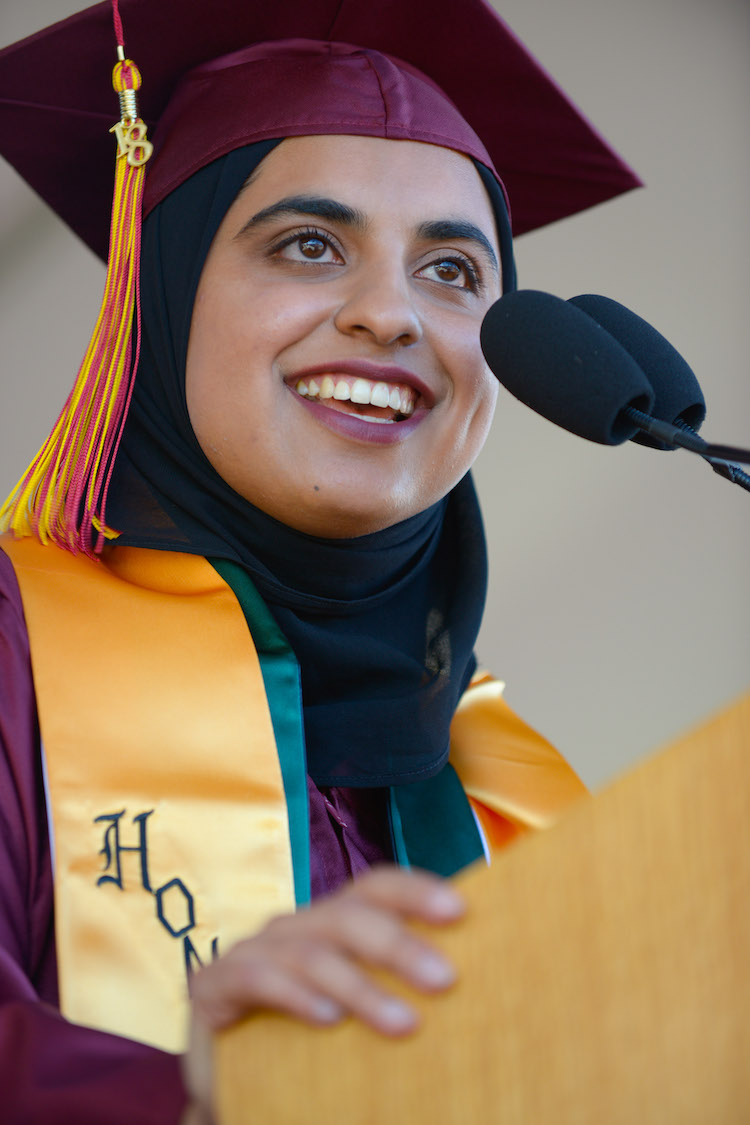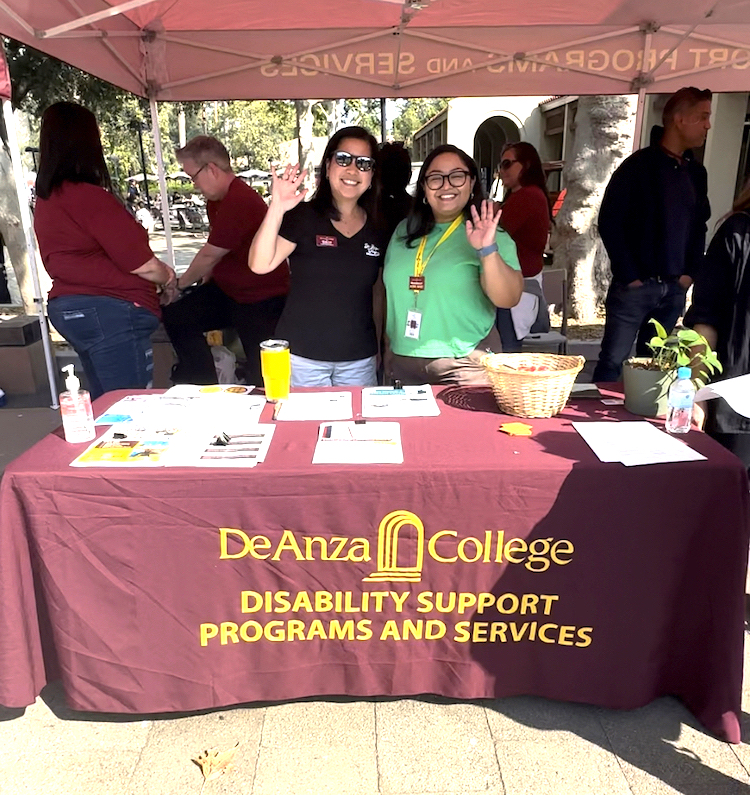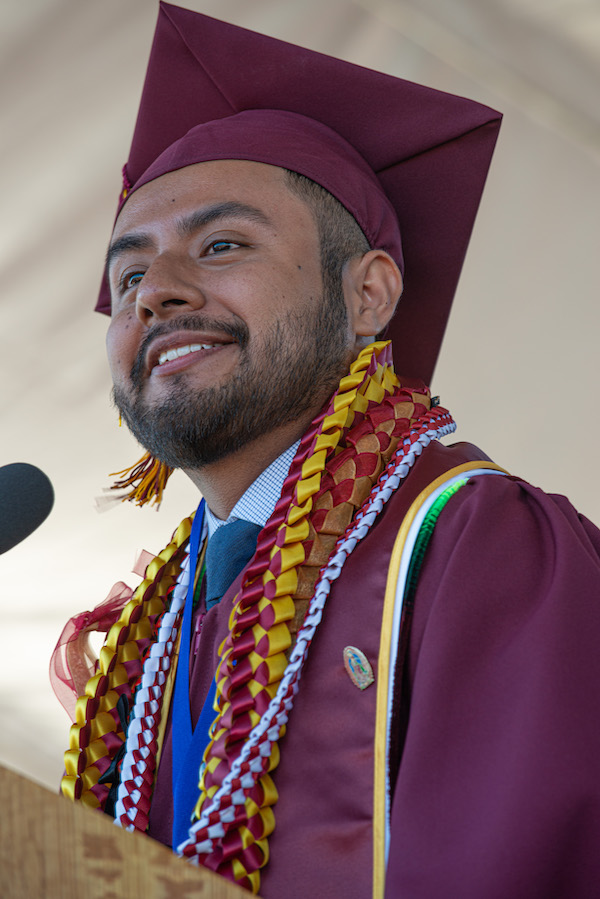Equity and Social Justice

The college profile includes these sections
- An Unparalleled Opportunity
- Educational Excellence
- Student-Centered Instruction
- Equity and Social Justice
- A Beautiful and Vibrant Campus
As part of its commitment to promoting equity in student achievement, the college strives to make all students feel supported and included on campus.
This effort begins with De Anza’s innovative Office of Outreach and Relations with Schools. Outreach counselors and staff members establish early connections by visiting high schools across the region, more than 150 times a year, to talk with prospective students about De Anza’s programs and answer questions about going to college.
The office also organizes annual empowerment conferences that bring hundreds of Black, Latinx, Filipinx and Southeast Asian high school students to De Anza’s campus, providing culturally relevant opportunities to learn about college and meet older peers who have made the transition from high school. These events are designed to make students aware that their backgrounds, culture and experiences are valued at De Anza.
 Outreach activities encourage completion of orientation, assessment and education
plans to ensure that students enter college with a sense of belonging and understanding
of how to reach their goals.
Outreach activities encourage completion of orientation, assessment and education
plans to ensure that students enter college with a sense of belonging and understanding
of how to reach their goals.
De Anza also offers a three-day Summer Bridge program for incoming students, designed to introduce new and first-generation students to the college experience and to the Learning Communities that nurture students from historically marginalized communities.
Once on campus, students have numerous opportunities to participate in multicultural programs and share diverse perspectives. The college’s Equity and Engagement Division includes the Vasconcellos Institute for Democracy in Action, described in the previous section, and the Office of Equity, Social Justice and Multicultural Education, which sponsors campus events and ongoing programs focused on equity and respect for diversity. The division also includes De Anza’s new Pride Center, which provides a physical space for LGBTQ+ students and allies to gather and hold activities, along with the Pride Learning Community.
De Anza’s Intercultural and International Studies (IIS) Division – one of the only academic divisions of its kind at a California community college – offers ethnic studies courses in African American Studies, Asian American and Asian Studies, Chicanx/Latinx Studies and Native American and Indigenous Studies. The IIS division also includes programs in Comparative Ethnic Studies and Women, Gender and Sexuality Studies.
Several Learning Communities, open to all students, offer additional support for students from historically marginalized communities. Learning Communities that provide academic counseling and services include First Year Experience, Guardian Scholars/NextUP (for current and former foster youth), IMPACT AAPI, LEAD (Latinx Empowerment at De Anza), Men of Color Community, MESA (Math, Engineering and Science Achievement), Puente, REACH (for student athletes), Rising Scholars (for students who were previously incarcerated or had family members who were prosecuted or incarcerated) and Umoja.
De Anza also has programs to assist students who are economically disadvantaged, extending beyond traditional sources of student financial aid.
- The De Anza College Promise offers free tuition and fees for two years, for eligible first-time college students attending full-time, along with dedicated counselors and other support.
- The Extended Opportunities Programs and Services (EOPS) office provides academic counseling, financial assistance, transfer support and other services to students who face social, economic or educational barriers.
- The Occupational Training Institute (OTI), based on the De Anza campus, coordinates job training and services for students who have been laid off or are transitioning from the state’s financial assistance program for needy families.
The college has developed a multi-pronged approach to assist the significant number of students who struggle to meet basic needs such as food and housing, along with mental health and transportation. In a spring 2022 survey, three out of 10 students said they faced housing insecurity in the previous year – with 16% reporting they had experienced homelessness – and three out of 10 reported food insecurity.
De Anza operates a free Food Pantry, which provides students with staples including fresh dairy products and produce, and the Resource Hub, a physical space where students can find snacks, hygiene products, baby supplies and other items, along with information and referral assistance for emergency resources such as housing.
Students can get psychological help through the college’s Mental Health and Wellness Center, as well as free, 24-hour mental health counseling through an online service called TimelyCare. The college also offers the SmartPass, for which students pay a nominal quarterly fee to ride free on the county transit system.
 De Anza also provides extensive support for students with disabilities, including dedicated counselors, physical accommodations, adapted physical education,
a computer accessibility lab and programs for students with hearing impairments. The
college serves about 1,200 students with disabilities each year.
De Anza also provides extensive support for students with disabilities, including dedicated counselors, physical accommodations, adapted physical education,
a computer accessibility lab and programs for students with hearing impairments. The
college serves about 1,200 students with disabilities each year.
Other specialized programs include Higher Education for AB 540 Students (HEFAS), which provides peer support, advocacy and resources for undocumented students, and the Veteran Services office, with dedicated counselors to assist students who are military veterans or military dependents.
While De Anza has made measurable progress in narrowing historic equity gaps, there are still disparities in student success rates. The college’s Master Plan for 2022-27 calls for concerted efforts to improve outcomes for Black, Filipinx, foster youth, Latinx, LGBTQ+, Native American, and Pacific Islander students. The plan identifies 10 metrics – including rates of course completion, degree attainment, transfer, workforce training and other important areas – with the goal of moving the rate for each of those population groups to within 5 percentage points of the rate for all other students.



 De Anza also has programs to assist students who are economically disadvantaged, extending
beyond traditional sources of student
De Anza also has programs to assist students who are economically disadvantaged, extending
beyond traditional sources of student